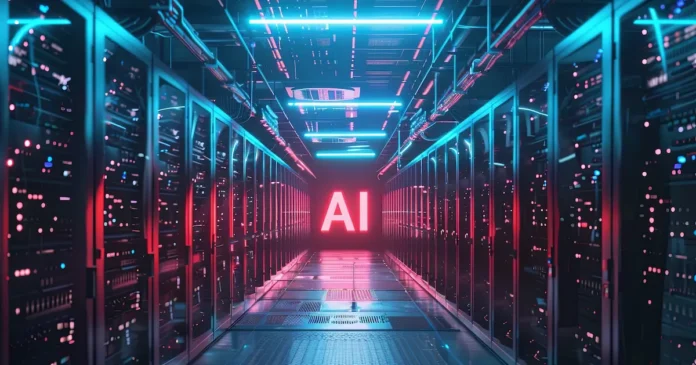Staff Reporter
UBS forecasts that the surge in AI data center construction, which began during the Trump administration, will provide significant economic momentum for the U.S. starting in 2026.
In a recent discussion, an asset manager involved in a major data center project in Texas described the industry’s trajectory as shifting into “sprint” mode through the end of the decade.
This trend isn’t complicated; hence, UBS maintains a positive outlook on the demand for power from data centers, especially for utilities linked to natural gas and midstream companies.
UBS analysts, led by Manav Gupta, noted that U.S. hyperscalers are investing hundreds of billions into AI data centers, resulting in an unprecedented increase in power demand.
Gupta emphasized that natural gas infrastructure is rapidly becoming the most reliable foundation for this explosive growth, benefiting midstream companies like The Williams Companies (WMB), Energy Transfer (ET), Kinder Morgan (KMI), DT Midstream (DTM), TC Energy (TRP), and Enbridge (ENB).
“Despite some initial reactions from DeepSeek and Microsoft reducing data center capacity, we still see a strong need for natural gas to support both announced and ongoing projects,” Gupta wrote.
The analyst highlighted some of the largest data center construction initiatives, which are quite impressive:
- Microsoft plans to invest $80 billion globally in AI data centers, with half earmarked for the U.S. This includes a $3.3 billion AI hub in Wisconsin and new capacity in ten countries this past quarter.
- Google has allocated $75 billion for 2025, primarily for servers and data centers supporting Google Cloud and DeepMind.
- Meta has raised its capital expenditure outlook to up to $72 billion for 2025, driven by increased spending on AI-optimized data centers in Louisiana and Ohio.
- Oracle is investing $40 billion in Nvidia chips for the $500 billion OpenAI-led Stargate supercenter in Texas.
- CoreWeave plans to spend $20–23 billion this year to expand its contracted capacity to 1.6 GW.
- Amazon, Apple, and Equinix continue to assert their aggressive buildout plans, citing sustained demand for AI.
With new nuclear capacity still years away and renewable sources like solar and wind considered unreliable, natural gas is positioned to be the backbone of AI infrastructure across Texas and the Heartland in the near-to-medium term.
Gupta referenced recent statements from Energy Transfer, which identified 150 data center opportunities in Texas alone, with additional prospects in Oklahoma, Mississippi, and the panhandle—creating favorable conditions for natural gas companies.
He also mentioned comments from Anthropic co-founder Jack Clark, who estimated that AI data centers will require 50 GW of new baseload power by 2027, equivalent to about 50 nuclear plants.
With no significant nuclear additions expected until the 2030s, this highlights natural gas as the most practical, reliable, and cost-effective energy source to support America’s AI data center expansion.
The Services and the Content are provided to you solely for your general informational purposes, and should not be considered as legal, tax, accounting, financial or investment advice.You are solely responsible for determining whether any investment is suitable for you, considering your investment objectives, risk tolerance and personal financial situation. It is also your responsibility to evaluate the merits and risks of using the information provided on this site before making any decisions.

